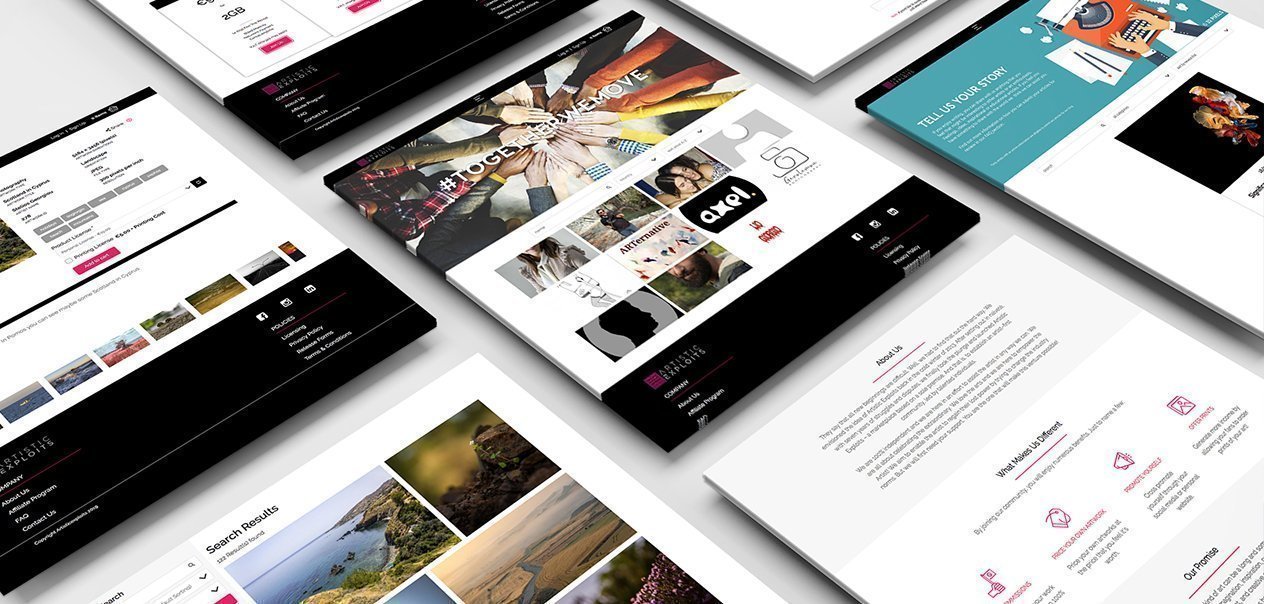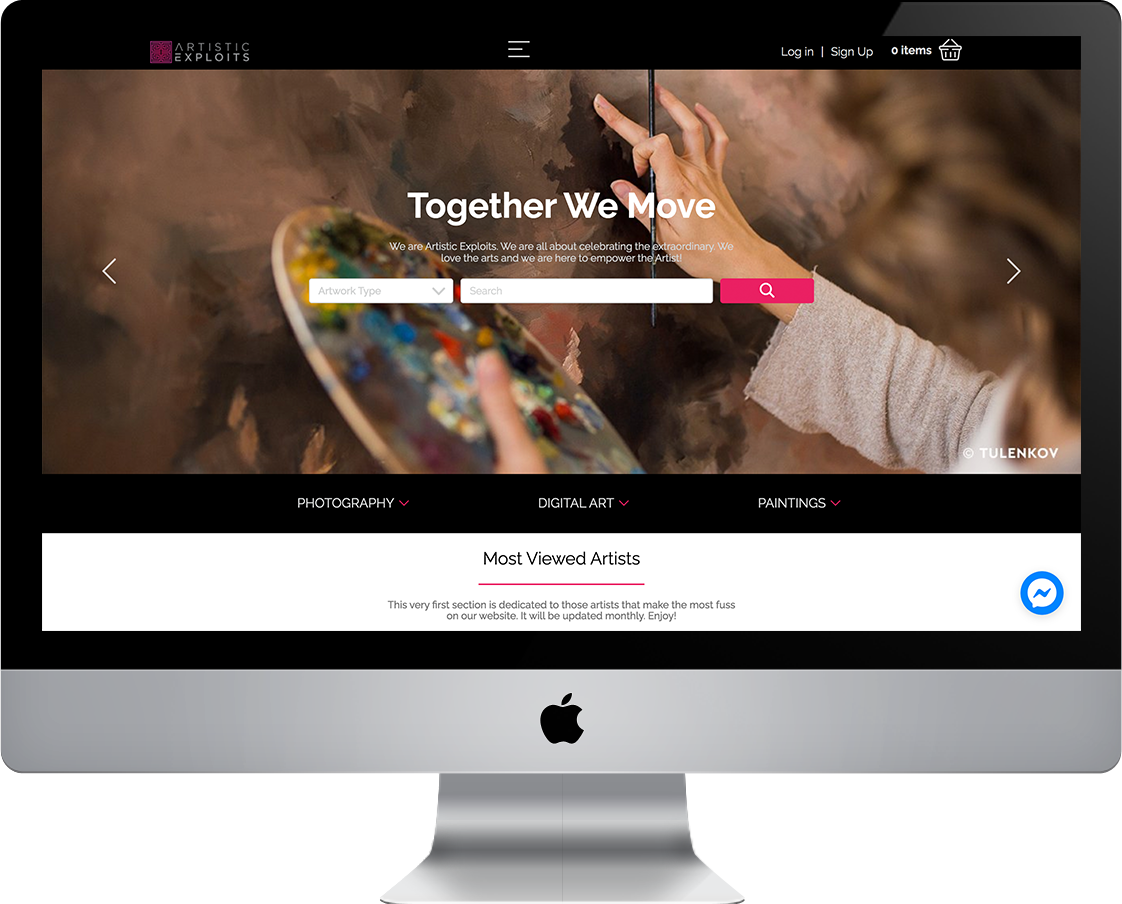
One of the biggest alterations recent times introduced to the world of art is the continuous turning towards the online market. Artistic Exploits approached us with the unique request to build a subscription–based platform that would enable artists to sell their artworks and cross–promote themselves.
We kicked off the project with an extended discovery phase including user interviews, content analysis, and rough design. Naturally, this formed an important part of our research, in addition to moderated and unmoderated user testing, analytics research and customer surveys. This allowed us to identify the business goals, the monetisation plan, the site’s primary user types, what drives the users to the site, and the ideal content path for the future. All decisions we made during the implementation phase were driven by the initial feedback and interviews of the Artistic Exploits team, ensuring that any impacting decisions considered the goals and desires of the creators and users. We were thus able to work collaboratively over the last year to build an all-new website from the ground up.
We relied on a style–guide to drive designs across the site so that when we had new additions or changed small details we could stay consistent with the look we were striving for. Once we connected all the points of communication together, we went into the actual development of the platform utilising Agile sprints, or micro-phases which were strategically planned to tackle different areas of this mammoth site.
Artistic Exploits needed a website that not only delivered on a hip, svelte design, but also a website with powerful capabilities and expansion options. We were able to provide a powerful, advanced platform that allows the client to achieve their goals more efficiently and establish the first non–commission artist community.

Built on top of Drupal commerce, we first identified and created the following product types to ensure we accommodate all users requests: photographs, digital art, physical painting, artist subscription, printing fee and print your own. For the first two product types, we enabled a boolean option to define whether the product could be sold in printed or digital form. Licenses were defined as variations, enabling the user to select which license to buy through Drupal’s product attributes. The actual paintings are packaged and shipped to the buyer on artist responsibility. The variation of this product contains fields for the Artist to define the shipping cost for the product per region e.g. EU, Non–EU, International. Drupal Commerce has customer-friendly shipping rules. We were thus able to determine the rules for applying shipping charges.
As for the subscription plan, a product of this type was used to define the various Membership Plans available by the Artists. Each product variation of this type, would represent a Membership Plan and would include in its fields: (a) time duration in months (b) trial period in days and (c) available space in GB or MB.
When registering, we allowed the artist to select a membership package. Membership packages were defined from the above product type and its variations. Upon administration approval of the Artist account, the Artist would be able to login and the trial period of the membership plan would commence. When the trial period of the plan comes to an end, the Artist is prompted to pay for the actual membership plan.
For the backend, we set up a Search API through Drupal's functionality, to index necessary product and variation fields and for filtering, we implemented facets.